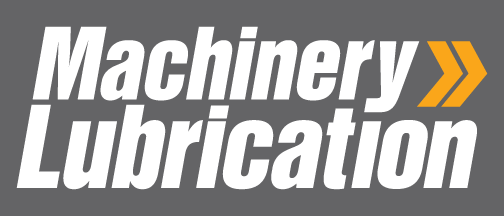
The most crucial part of any lubrication program is having a proactive process to identify and control contamination for vital equipment. By defining the contaminants commonly found in industrial equipment, a program can gain insight into how these contaminants enter equipment to better protect critical machines.
4 Common Types of Contamination
In the industrial setting, four common types of oil and grease contaminants are:
- Particles
- Water
- Air
- Heat

Particle Contamination
This contamination is the largest cause of industrial machinery contamination failures and severely affects equipment uptime. Particles include dirt or contaminants found in or near the equipment’s environment and other debris and materials created in the equipment after contamination occurred.
Particle-induced wear significantly contributes to the wear and failure of oil and grease-lubricated equipment in industrial settings. The forms of particle wear are abrasion, erosion, denting, and surface fatigue. Internal particle wear within the equipment can cause additional failure modes such as abrasion, cavitation, and corrosion. If left unchecked, this vicious cycle will cause machinery to fail.
Particle contamination is characterized by size, shape, angularity, material, and hardness. Knowing the number of particles and their sizes in a lubricant helps gauge the current condition of equipment. For example, a large number of small particles suspended in an oil can be more damaging to critical equipment than larger particles.
There are three ways particles get into oil systems:
- Particles are left behind in new equipment during assembly. Examples include welding slag, filings, casting debris, and dirty hoses.
- Particles, including dust, dirt, and other foreign debris, enter equipment from the operating environment. This is commonly caused by inadequate air filtration and poor sealing.
- Particles are generated during equipment operations. Examples include mechanical wear, hose and filter fibers, and corrosion wear.
Oil analysis and particle counting are critical for machine health. Once a sample is sent to a lab, the number and size of the particles can be identified to better define the equipment’s current condition. Conducting oil analysis on all new equipment is also advised to form an accurate condition baseline for future contamination concerns.

Water Contamination
Water contamination can come in several forms: dissolved, free, and emulsified.
Dissolved water is found in new oils. The water is thoroughly mixed into the oil and cannot be seen by the naked eye. The amount of water dissolved depends on the additives and base oil type. As the oil’s water content increases, microscopic water droplets become suspended and cloudy in color.
Free water has a higher density than oil, allowing it to settle at the bottom of a reservoir or container. When hot, the contaminated oil can appear clear to the naked eye, but after several hours of cooling, the oil will look cloudy.
Emulsified water occurs when the amount of water has exceeded the maximum level at which the oil can dissolve, known as the saturation point. The tiny water droplets disperse and become suspended, giving the oil a hazy appearance. A variety of additives can negatively influence this type of contamination by causing a chemical reaction. When this type of water contamination occurs, a detergent or contaminant in the oil must serve as a demulsifying agent.
Water contamination in oil can:
- Break down base oils and some additives.
- Remove some oil additives from the oil.
- Create acids and sludges.
- Encourage bacteria growth.
- Create foam and air entrapment in the oil.
- Increase electrical conductivity.
- Increase viscosity.
Water contamination in a machine can result in:
- Rust and corrosion.
- Loss of oil-film strength.
- Increased cavitation.
- Possible filter damage or premature plugging to filters.
- Catastrophic failure.

Air Contamination
Air contamination can present in four primary forms: dissolved, free, foam, and entrained.
All industrial oils contain some dissolved air. This contamination does not damage most equipment except pumps, which contributes to the oxidation of the oil's additives.
Free air contamination is a pocket of air trapped in a higher region within a machine’s oil lubrication system. When this happens in a hydraulic oil system, it can cause system pressure to drop and lose its prime at the pump, making system response time sluggish.
Foaming is observed as air bubbles on an oil’s surface. In contrast, air entrainment concerns air bubbles that remain suspended within the oil tank or reservoir. These last two types are hard to distinguish and often work hand in hand, causing major concerns with industrial oil systems for several reasons, including:
- Making oil levels challenging to determine.
- Contributing to higher rates of oxidation.
- Causing cavitation and related wear.
- Resulting in poor control of hydraulic systems.

Heat Contamination
Heat is also considered a form of contamination due to its ability to create solid sludge and varnish deposits. If not monitored correctly, heat can become a silent killer for industrial equipment over time.
In most heat-treated industrial equipment situations, this can be found when temperatures exceed manufacturers' requirements. Most general equipment like this has nitrogen generators installed to help keep the oil from "sooting." Also, periodically scheduled oil changes will help dismiss this condition altogether.
Controlling Contamination
There are many ways to prevent particles and other contaminants from entering oil, including:
- Store oil in clean and dry environments.
- Only move lubrication in sealed containers.
- Transfer oil into equipment through hoses with only quick disconnect couplers using filter carts.
- Do not use reusable funnels or open-fill ports.
- Only use lint-free cloth during cleaning and after flushing already contaminated equipment.
- Remove old-style goosenecks and tap and spin vents, breather caps, and other older-style vent plugs that are not filtered. Instead, use desiccant filter breathers with a minimum rating of 3 microns.
- Ensure all reservoir hatches and inspection plates are sealed correctly.
- Install better shaft sealing mechanisms.
- Install accordion-style rubber boot seals on hydraulic cylinders.
- Utilize clean and properly serviced filter cards labeled to prevent cross-contamination.
Lubrication Storage
Proper lubricant storage can help prevent contamination and extend the lubrication shelf life. When storing lubricants, a few basic rules to follow include:
- Keep lubricants clean and dry by storing them indoors and temperature-controlled.
- Ensure all lubricants are correctly labeled to prevent cross-contamination and that the proper lubricant is used.
- Ensure all lubricant containers are properly and tightly sealed to prevent water, dust, and other airborne contaminants from entering.
- Utilize the “first-in-first-out” (FIFO) method, noting the date the lubricant was received and the best-by date.
Lubricant Handling
Handling lubricants presents a host of opportunities for contaminants to enter a facility’s oil. General rules when handling lubrication include:
- Inspect all new lubricants received for cleanliness and water content.
- Check that all new lubricant drums have intact plastic warranty seals.
- Stored lubrication containers should be rotated so the older stock is used first.
- Lubricants should not be stored for longer than five years, keeping in mind that drums and pails can be stamped with their filled date and not their expiration date.
- Transfer lubricants from drums into sealed and marked plastic containers in a clean working environment.
- Lubricant top-up containers should be inspected once a month for internal cleanliness, checking for possible sediment.
- Keep the lubricant storage area neat and orderly at all times.
- Drum pumps should be labeled for a specific lubricant and threaded completely into the top of the drum.
- Use lubricant pre-filtered through filter carts when oil is being transferred into equipment, making sure to use quick-connect couplers during lubrication filtering and oil changes.
- Filter carts must be appropriately labeled to the specific type of lubricant they are being dedicated to.
- Quick-connect couplers should be sized differently to help prevent cross-contamination of lubricant.
Grease and Grease Gun Lubrication Handling, Storage, and Application
- Do not self-pack grease guns by hand.
- Properly label or color code grease guns to prevent lubricant cross-contamination.
- New grease guns should be calibrated for the amount of per-stroke grease being dispensed.
- Grease guns create a lot of pressure when pumping grease in grease-fill tubes. Periodic inspections of bearings are needed to ensure the grease tube has not popped off and the bearing receives the proper amount of grease.
- Store tubes of grease vertically with the plastic removable cap on top.
- The grease manufacturer determines grease storage life and, most times, is marked on the grease tube.
This paper was provided as supporting materials for Scott Briner's speaking session at the Reliable Plant Conference. To learn more about attending Reliable Plant Conference, click here.








